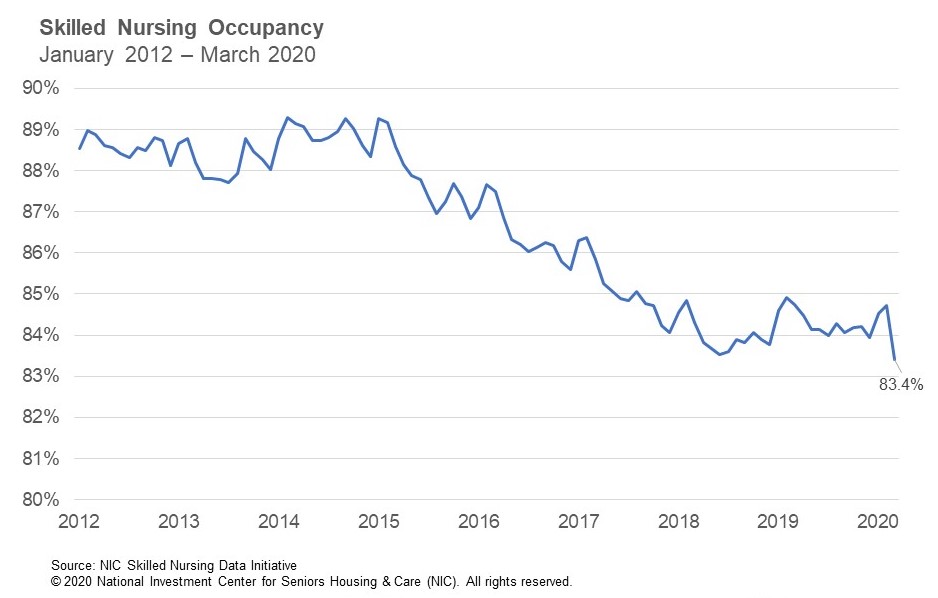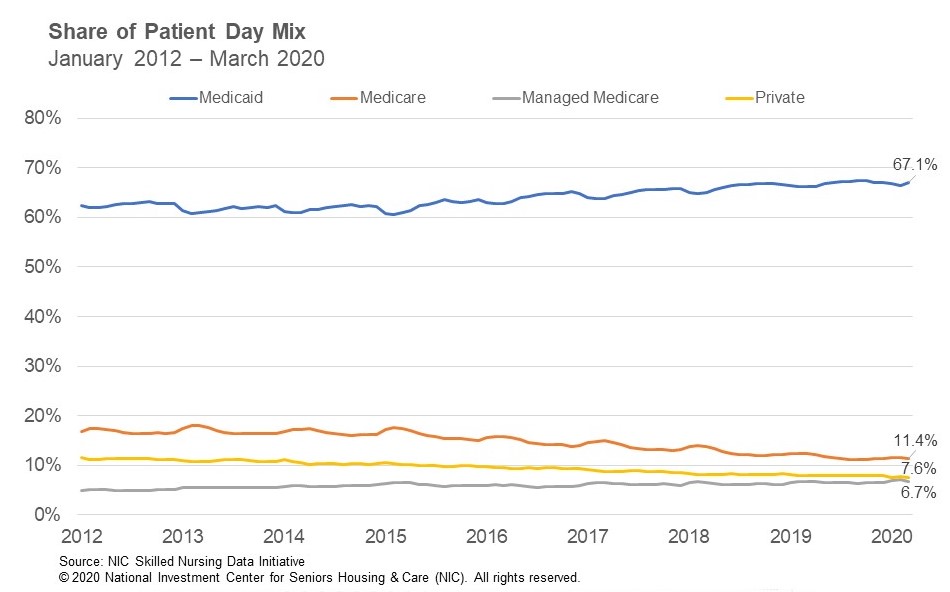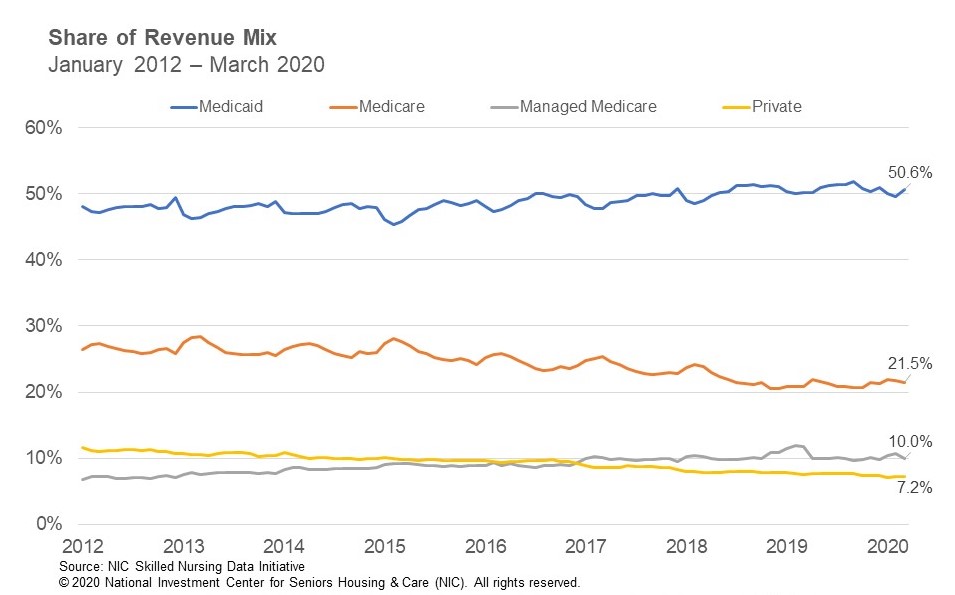First Monthly Data Release from NIC’s Skilled Nursing Data Initiative
Data Ending March 2020 Shows 132-Basis Point Decline in Occupancy from February.
In response to rapid market changes caused by the COVID-19 pandemic and its impact on the skilled nursing industry, NIC has increased the data release frequency for key performance metrics. Starting now and going forward, NIC will release data from its Skilled Nursing Data Initiative on a monthly basis. NIC will post data through April 2020 by July 7, 2020. Key points from the first monthly release with data from January 2012 through March 2020 are summarized below.
- The initial effects of the COVID-19 pandemic were evident on skilled nursing occupancy in March, with a 132-basis point decline from the prior month and a 53-basis point decline from year-end 2019 to 83.4% in March 2020. This pushed the occupancy rate to its lowest level since NIC began collecting the data in 2012. Larger impacts are anticipated in April when the pandemic was significantly more pervasive. Occupancy usually increases from the fourth quarter to the first quarter given the flu season and higher admissions in the winter months, but the coronavirus changed that pattern as a result of hospital transfers associated with the illness and fewer admissions related to post-acute elective surgery care needs. Furthermore, occupancy decreased year-over-year as it slipped 134 basis points from March 2019.

- Skilled mix increased 17 basis points from the fourth quarter 2019 to end March 2020 at 25.3% as Medicare and managed Medicare patient day mix increased from December 2019. However, there was a drop in both Medicare and managed Medicare from February to March 2020, falling 18 basis points and 46 basis points, respectively. These declines suggest the pressure on new post-acute admissions began in the month of March as COVID-19 started to impact skilled nursing properties. The pressure on Medicare and managed Medicare in March resulted in skilled mix decreasing 59 basis points from February to March 2020. Skilled mix also showed a decline year-over-year as it decreased 60 basis points from March 2019.

- Overall managed Medicare revenue mix continued to hover around 10%. Managed Medicare revenue mix initially increased as expected in the first quarter of 2020, rising from 9.9% in December to 10.4% in January to 10.8% in February 2020 before slipping 76 basis points in March as COVID-19 likely started to impact managed Medicare admission due to various factors such as suspension of elective surgeries. Managed Medicare revenue mix was down almost two percentage points from a high-water mark of 11.9% in February 2019 due to continued revenue per patient day pressure and more recently the effects of the coronavirus. However, over the longer-term since 2012, managed Medicare revenue mix has been in an upward trend increasing from 6.8% in January 2012.

- Medicaid patient day mix held relatively steady in the first quarter of 2020, increasing slightly by 9 basis points from December 2019 to 67.1% at the end of March 2020. Compared with February, Medicaid patient mix increased 66 basis points as less of the patient population was likely associated with post-acute care, i.e., Medicare and managed Medicare stays were likely down due to the numerous measures implemented to contain COVID-19. This is notable and suggests that the occupancy decrease from February to March was mainly, if not all, due to the decreases in post-acute admissions.
To get more trends from the latest data, please download the NIC Skilled Nursing Data Report. There is no charge for this report. The latest quarterly report will be released on June 10, 2020.
This report provides aggregate data at the national level from a sample of skilled nursing operators with multiple properties in the United States. NIC continues to grow its database of participating operators in order to provide data at localized levels in the future. Operators who are interested in participating can complete a participation form here. NIC maintains strict confidentiality of all data it receives.